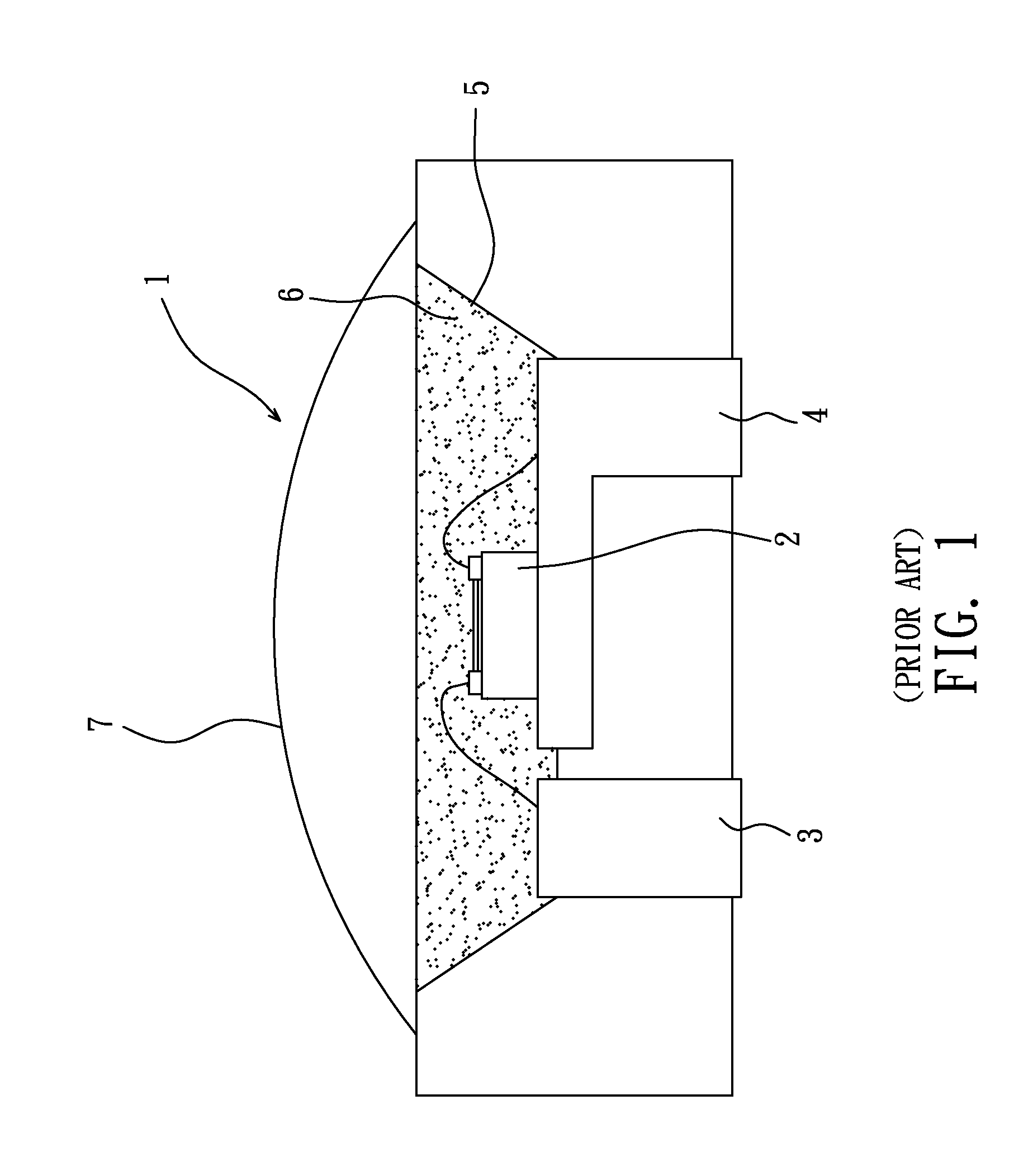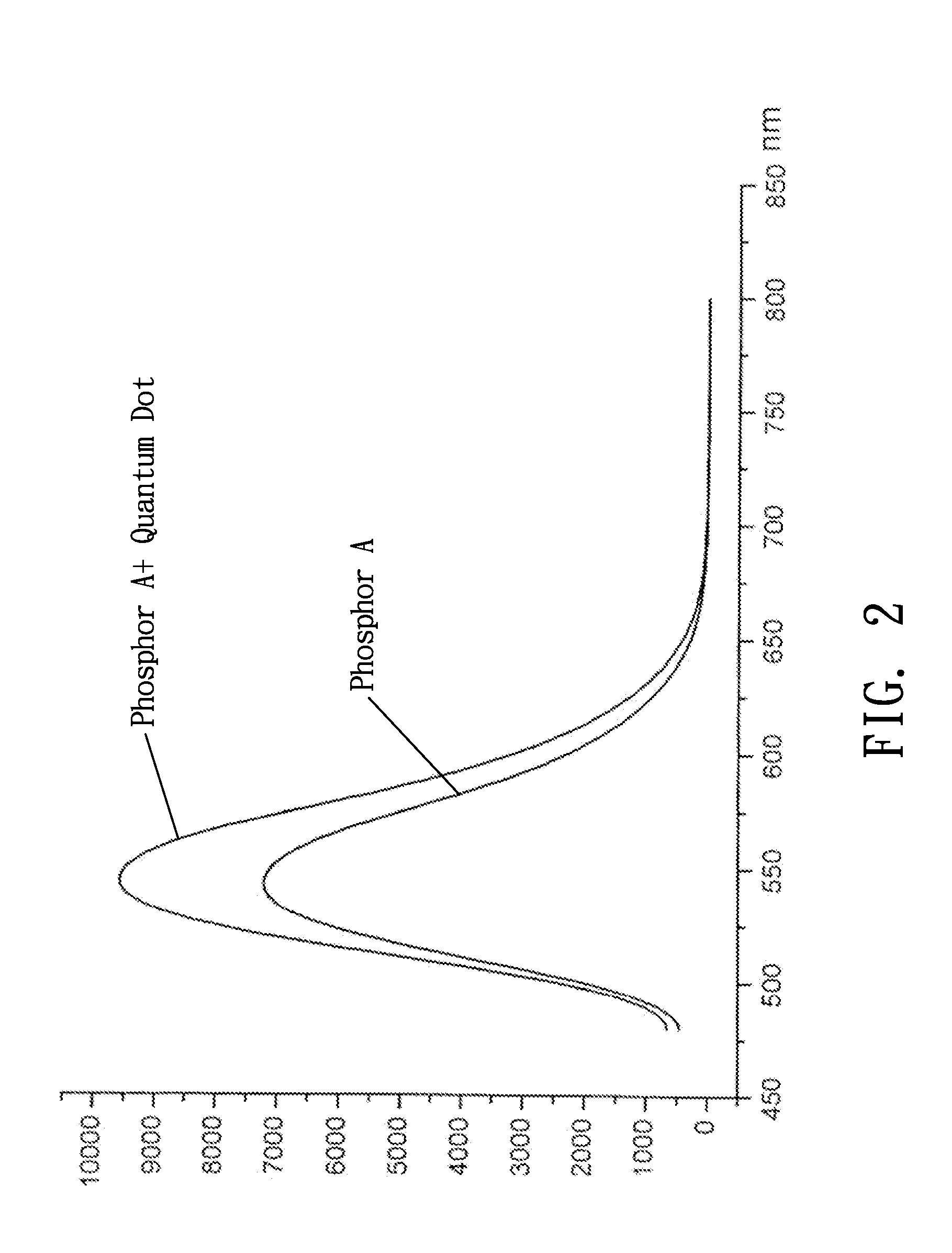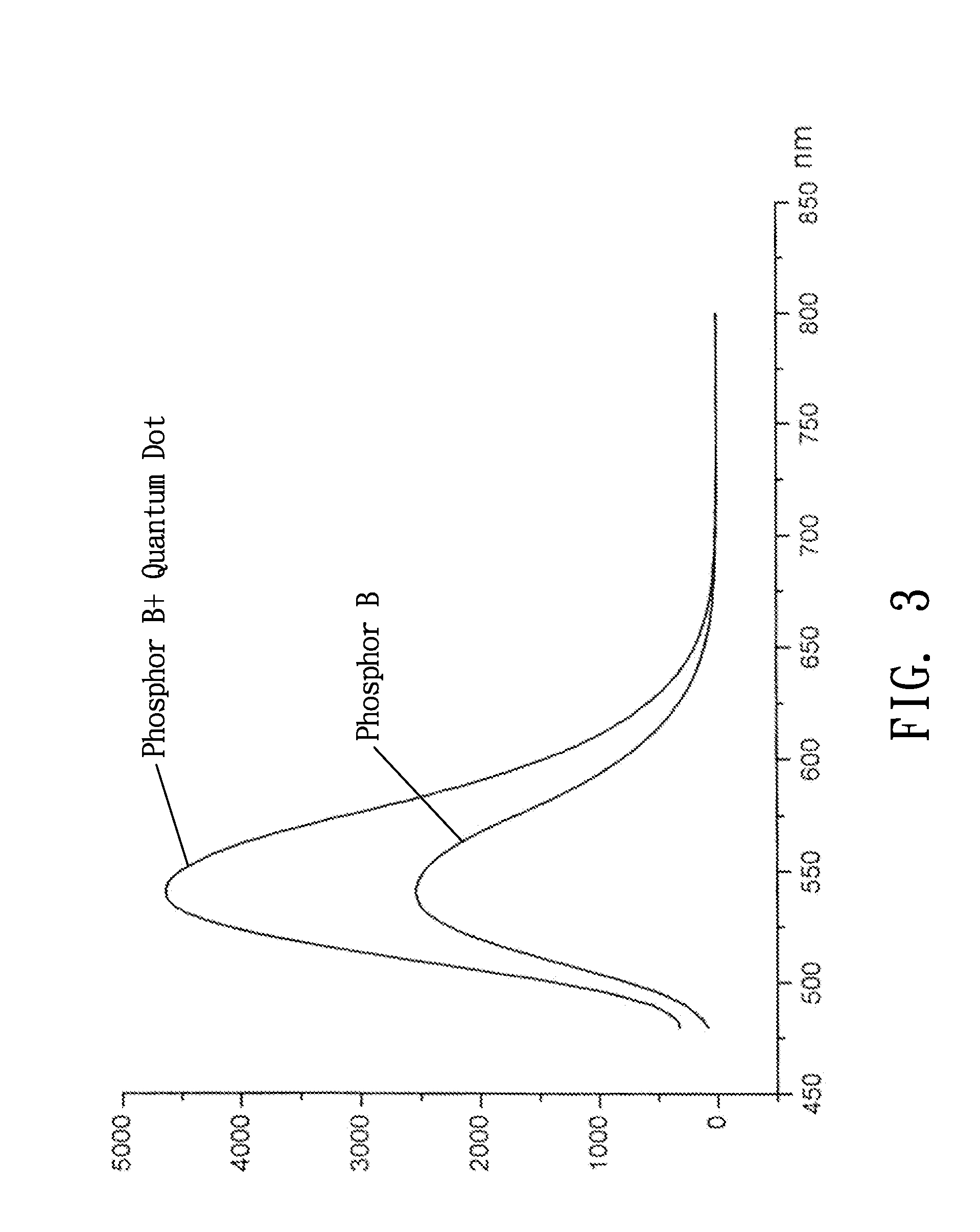Compound Material for Inorganic Phosphor and White LED
a technology of inorganic phosphor and compound materials, which is applied in the direction of luminescent compositions, semiconductor devices, chemistry apparatuses and processes, etc., can solve the problems of reducing the luminous efficiency of led, not being used for useful applications, and increasing the temperature inside the heterostructure, so as to eliminate the drawbacks of conventional led optical performan
- Summary
- Abstract
- Description
- Claims
- Application Information
AI Technical Summary
Benefits of technology
Problems solved by technology
Method used
Image
Examples
Embodiment Construction
[0024]A compound material for inorganic phosphor and white LED in accordance with the present invention includes two inorganic substances, i.e., phosphor and light scatter, and a polymer adhesive. The compound material is used as a spectrum conversion film for interaction with a shortwave light radiated by an InGaN heterostructure, characterized in that the light scatter is a nano-scale powder material of AIIBVI quantum dot compound in which A=Zn, Cd; B═O, S, Se, Te, and composed with (Y2-x-y-zGdxCeyDyzO3)1.5±α(Al2O3)2.5±β inorganic phosphor to form a compound material. When compared to a standard phosphor binding object, the compound material re-radiates the light by a rise about 30˜70%, assuring emission spectrum maximum wavelength λ=542˜544 nm, radiation color coordinates 0.32□x□0.36, 0.32□y□0.38, and dominant wavelength λ□548 nm.
[0025]Further, the nano-scale powder material formed of AIIBVI quantum dot compound of the light scatter is based on (CdS)1˜p(CdSe)p series, raising Ful...
PUM
| Property | Measurement | Unit |
|---|---|---|
| quantum efficiency | aaaaa | aaaaa |
| optical porosity | aaaaa | aaaaa |
| size | aaaaa | aaaaa |
Abstract
Description
Claims
Application Information
 Login to View More
Login to View More - R&D
- Intellectual Property
- Life Sciences
- Materials
- Tech Scout
- Unparalleled Data Quality
- Higher Quality Content
- 60% Fewer Hallucinations
Browse by: Latest US Patents, China's latest patents, Technical Efficacy Thesaurus, Application Domain, Technology Topic, Popular Technical Reports.
© 2025 PatSnap. All rights reserved.Legal|Privacy policy|Modern Slavery Act Transparency Statement|Sitemap|About US| Contact US: help@patsnap.com



